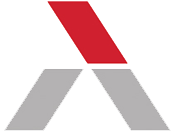When new hires leave in their first year, it’s often because they weren’t right for the role or the organization in the first place. Pre-hire screens are a well-known strategy for evaluating a candidate’s “fit” for the organization, but some organizations are starting to use pre-hire screens to predict a candidate’s risk of turning over in a given role.
We recently spoke with Kevin B. Dull, SVP and Chief of Human Potential, from MultiCare Health System, about how the organization uses a tool to pre-screen candidates for the likelihood of turnover.
Read on to learn more about:
- The business case for investing in a pre-hire screen
- How the pre-hire screen fits into the hiring process
- Addressing challenges along the way
- Results
The business case for investing in a pre-hire screen
Q: The tool you chose pre-screens candidates for the likelihood they will turnover in a given role. What was the impetus for investing in the tool, and how did you make the business case?
A: Our CEO had experience using Arena’s tool with his previous organization, so he was the one who championed bringing it to MultiCare. The business case centered on the cost of turnover and the need to reduce agency labor spend.
Our organization includes a retention goal in the compensation plan for all leaders (supervisor and above), so it’s an area we are being very intentional about. Changing the way we pre-screen hires was one of many strategies we took on to help us improve. Once we had early results that showed the tool was helping us reduce early turnover, we were able to reinforce the business case for using it.
Q: You’re currently using the pre-hire screen for RN roles only. Why did you decide to prioritize this group?
A: Our strongest business case was with the hospital RN role—it was our biggest area of improvement and where we’d get the biggest bang for our buck. Retaining staff longer has a direct positive impact on reducing overtime, double-time, and agency costs. We’ve since added RN residents and will soon add hospital-based CNAs.
How the pre-hire screen fits into the hiring process
Q: What data does the pre-hire screen require?
A: The tool pulls thousands of data points into a correlation regression analysis, and it predicts the likelihood that a candidate will turnover in a given role in a given location (based on the applicant data and our organization’s data).
- Applicant data:
- Data the applicant submits in their application and assessment
- Publicly available third-party data
- Meta-data from the assessment (e.g., key strokes; whether the candidate moves linearly through the assessment, skips questions, completes in one sitting or comes back, etc.)
- Organizational data:
- Three years of hire and termination data
- Arena’s pre-hire assessment data from tenured RNs at our organization
- Turnover data on a monthly basis
The models are self-learning so they improve over time as well.
Q: Walk us through the typical candidate experience. When do they complete the pre-hire screen?
A: Candidates receive an automatic email asking them to complete the pre-hire screen after they’ve submitted an application. It takes about 15-20 minutes to complete and can be done using a mobile phone or a computer.
The assessment asks a series of questions—many standard questions that you’d expect to see when going through an assessment for a particular job function. However, candidates also answer unexpected questions, such as a math problem or a reading comprehension problem. We have a 90% completion rate amongst applicants.
Q: How do recruiters and hiring managers use the output of the tool in the hiring process?
A: The process is:
- After an applicant completes the assessment, their score is automatically sent to a recruiter. The candidate is coded as green (recommended), yellow (caution), or red (not recommended), based on how they scored on the assessment.
- Recruiters determine whether or not to send the candidate along to hiring managers. Recruiters who have fully adopted using the tool will send only green (recommended) candidates to hiring managers—but recruiters can use their discretion when sending along candidates. We strongly encourage them to factor in the tool’s recommendation.
- Hiring managers use the tool’s recommendation as another factor in the hiring decision. Once a hiring manager interviews the candidate, they use Arena’s recommendation as another factor going into the hiring decision.
Even though we don’t require recruiters and hiring managers to use the tool as a “knock-out” (i.e., eliminating some of the candidate pool), data suggests it’s in their best interest to do so. Departments that have higher adoption rates of the tool’s recommendations have higher retention rates.
Q: Do you use the pre-hire screen tool for leaders as well?
A: We use a different pre-hire assessment for leaders (supervisor and above) called the Harrison Assessment. To give a high-level overview, it’s a psychological assessment that measures how an individual feels about being a leader (e.g., do they have a passion for being a leader, are they optimistic and persistent?). The idea is that if an individual truly enjoys being a leader, if they are persistent, they will be naturally more successful.
Addressing challenges along the way
Q: For a pre-hire screen to yield a return on investment, it’s important that leaders trust and use the tool. What advice would you give to other organizations interested in investing in a pre-hire screen, especially during the roll-out process?
A: The implementation and roll out process with Arena was not a heavy lift, but it is very important that you bring leaders and key stakeholders on board and help them understand the tool from the very beginning—otherwise you run the risk of encountering resistance. We initially mandated usage of the tool (meaning recruiters could only send along candidates to hiring managers that were recommended by the tool). Naturally, we have the tendency to believe we are better selectors of talent than an algorithm.
Our leaders were also concerned a pre-hire screen would end up reducing the amount of candidates that got sent to hiring managers. By mandating usage without ensuring that everyone fully understood how the tool worked, what it would help us do, and some of the potential implications, we did face early resistance.
Since then, we’ve rolled back mandatory usage. Recruiters and hiring managers have the option to factor the assessment into the hiring decision. Current adoption rate for the tool is about 60-70%. To increase adoption even more, we are continuing to share the data that retention rates are higher for departments that have a higher adoption rate of the tool.
We’re also partnering with Arena to ensure all of our managers have a complete understanding of the tool and are trained on how to use it. We’ve also shared data from other organizations that Arena’s tool helps temper the influence of stereotypes and bias in the hiring process, by providing an objective measure.
Q: You mentioned that leaders were concerned that the pre-hire screen would reduce the size of the candidate pipeline by weeding out candidates in an already tight labor market. How did you address that?
A: We had to share data with them that the pool was still large enough—and that the tool was meant to send along the best candidates and reduce the amount of time spent on recruiting. It’s better in the end to avoid wasting time interviewing candidates who aren’t strong or hiring someone who will quit in three months.
Results
Q: What results have you seen since introducing the tool in regards to first-year turnover at your organization?
A: Results have been very encouraging. Since introducing the tool, we’ve had a 27% reduction in first-year turnover for employees that the tool has recommended. We also have data showing that RNs recommended by the tool are 40% less likely to turn over at the 180-day mark.
Want to learn more about preventing turnover at your organization?
Turnover is a growing challenge for many organizations, especially when it comes to millennials. We’ve collected a set of best practices to help you understand the factors behind early turnover and learn how to keep staff at your organization beyond their first three years.
Already a member? Visit our one-stop shop to access benchmarks, tools, and best practices to reduce staff turnover.
Not a member? Visit our membership page to learn more about the benefits of membership.
Don't miss out on the latest Advisory Board insights
Create your free account to access 1 resource, including the latest research and webinars.
Want access without creating an account?
You have 1 free members-only resource remaining this month.
1 free members-only resources remaining
1 free members-only resources remaining
You've reached your limit of free insights
Become a member to access all of Advisory Board's resources, events, and experts
Never miss out on the latest innovative health care content tailored to you.
Benefits include:
You've reached your limit of free insights
Become a member to access all of Advisory Board's resources, events, and experts
Never miss out on the latest innovative health care content tailored to you.
Benefits include:
This content is available through your Curated Research partnership with Advisory Board. Click on ‘view this resource’ to read the full piece
Email ask@advisory.com to learn more
Click on ‘Become a Member’ to learn about the benefits of a Full-Access partnership with Advisory Board
Never miss out on the latest innovative health care content tailored to you.

